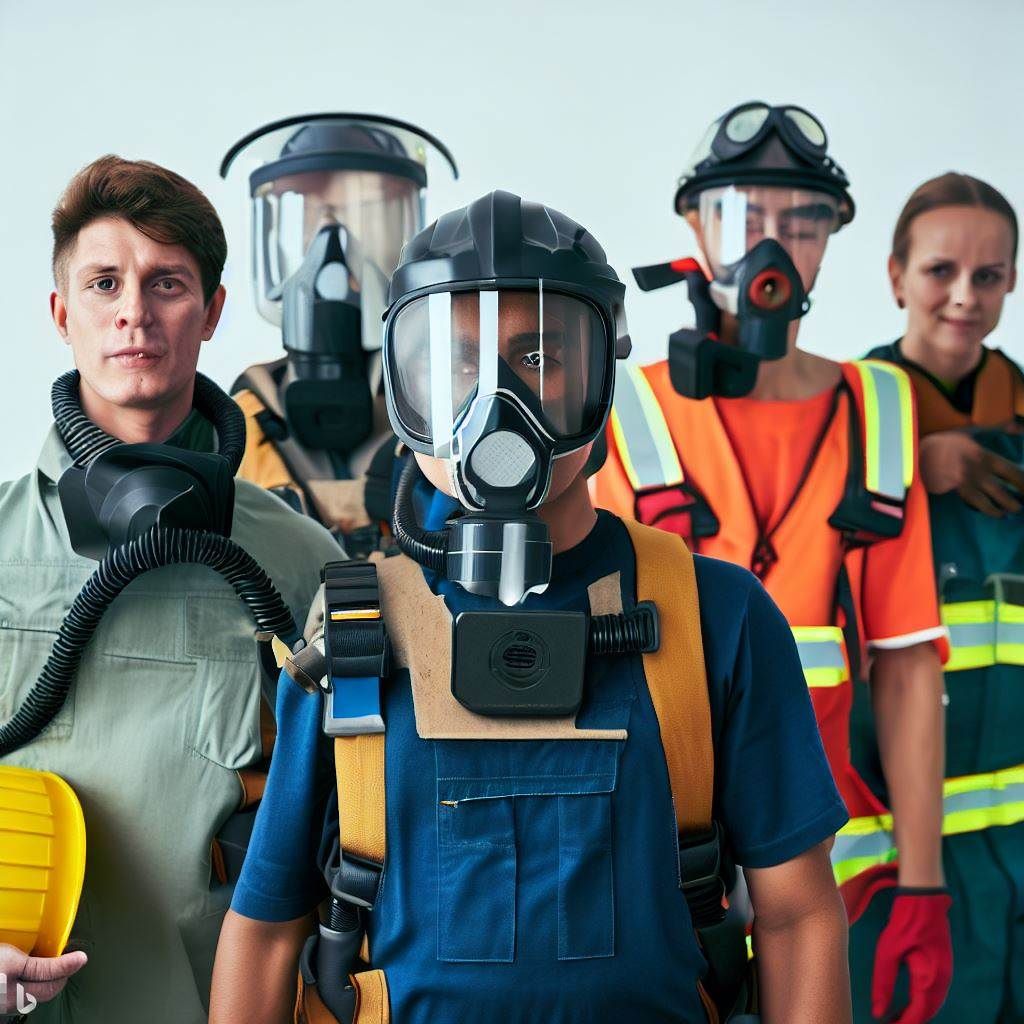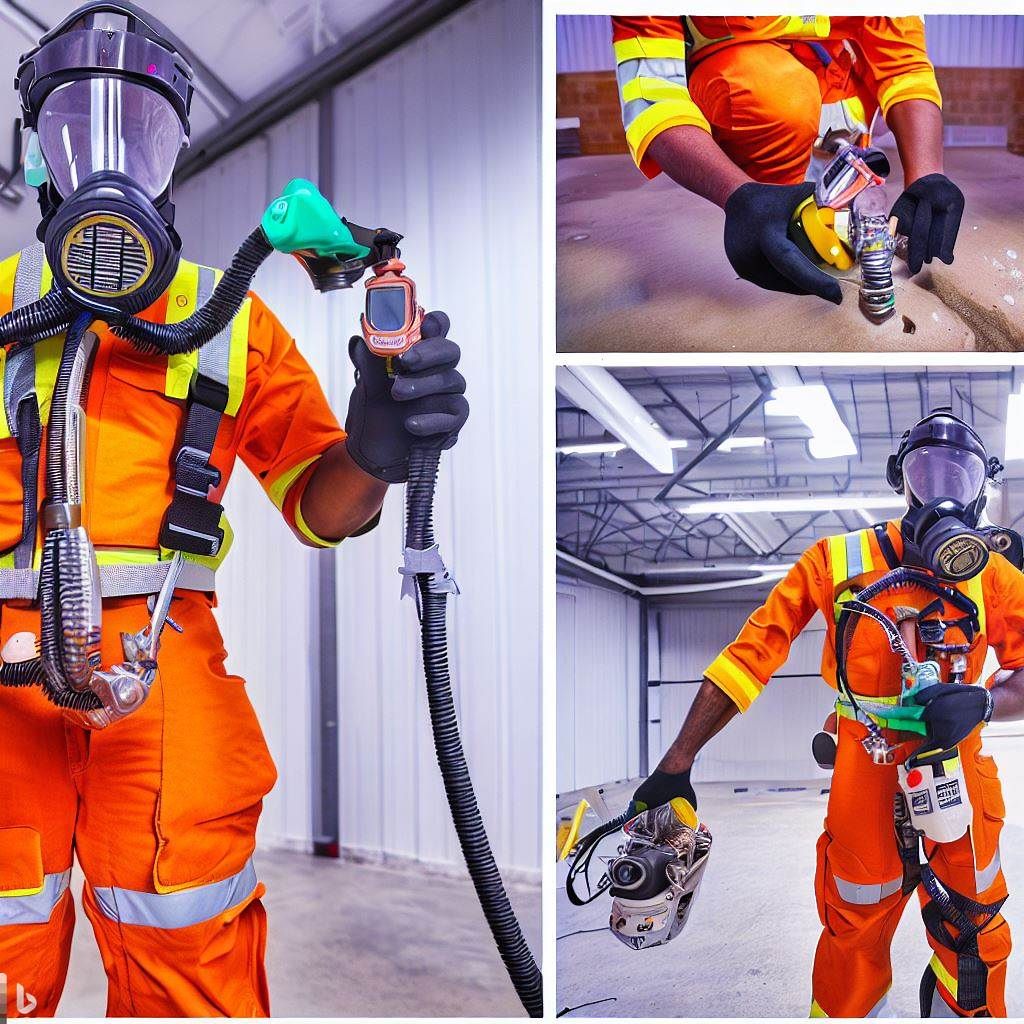Maximizing Safety with Confined Space Breathing Apparatus: Best Practices and Precautions
The confined space breathing apparatus (CSBA) is vital in occupational health and safety. These devices are essential for providing breathable air in environments where the atmosphere may be oxygen-deficient or contain harmful gases. The CSBA protects workers’ respiratory systems when performing tasks in confined spaces such as storage tanks, sewers, and tunnels.
The importance of these devices cannot be overstated. They serve as lifelines for personnel working in challenging conditions, often saving lives. The CSBA includes various equipment such as self-contained breathing apparatus (SCBA), air-supplied respirators, and filtering facepiece respirators, each designed to meet specific needs.
Being familiar with the CSBA is not enough. Workers must also understand how to use these devices correctly, maintain them regularly, and take necessary safety precautions. This article aims to provide a comprehensive guide on maximizing safety with the confined space breathing apparatus.
Importance of Breathing Apparatus in Confined Spaces
Confined spaces present numerous hazards, including the risk of suffocation, poisoning, or explosion due to harmful gases. The confined space breathing apparatus comes into play here, providing a vital safety measure for those working in such environments. The CSBA ensures that workers have a constant supply of clean, breathable air, protecting them from potential respiratory damage.
Without a CSBA, workers are vulnerable to dangerous substances that could be present in the air. For example, in a storage tank, the atmosphere could contain gases like carbon monoxide, methane, or hydrogen sulfide. These gases are not only harmful when inhaled but can also be explosive in certain conditions. The CSBA provides a barrier between the user and the hazardous atmosphere, reducing these risks.
The CSBA is not just about providing protection – it’s about ensuring that workers can perform their tasks effectively and safely. Without these devices, many jobs in confined spaces would be impossible.

Types of Confined Space Breathing Apparatus
Three main types of confined space breathing apparatus exist self-contained breathing apparatus (SCBA), air-supplied respirators, and filtering facepiece respirators.
SCBAs are typically used in the most hazardous environments. They supply breathable air from a tank the user carries, allowing them to work in spaces where the atmosphere is immediately dangerous to life or health.
Air-supplied respirators, also known as airline respirators, are connected to a source of clean air via a long hose. These devices are commonly used when the atmosphere contains harmful substances but are not immediately life-threatening.
Filtering facepiece respirators, often dust masks, are used in less hazardous environments. These masks filter out particles from the air but do not supply breathable air. They are suitable for use in spaces where the air may contain dust or other small particles but not harmful gases.
Best Practices for Using Confined Space Breathing Apparatus
Following best practices to ensure safety is crucial when using a confined space breathing apparatus. These include ensuring the correct fit of the equipment, checking the equipment before use, and following proper procedures for entering and exiting confined spaces.
Firstly, the CSBA must fit correctly to provide full protection. This means the mask should seal against the user’s face, with no gaps for air to enter. Users should be trained to adjust their CSBA’s fit to ensure it is secure and comfortable.
Before entering a confined space, the CSBA should be checked thoroughly. This includes checking the air supply, ensuring all parts of the equipment are in good condition, and testing the device to ensure it functions correctly.
When entering and exiting confined spaces, workers should follow a defined procedure. This typically involves testing the atmosphere before entry, maintaining communication with a standby person outside the space, and exiting the space immediately if there is any indication of a problem with the equipment or the atmosphere.
Safety Precautions for Confined Space Breathing Apparatus
Safety is paramount when using a confined space breathing apparatus. Precautions must be taken to ensure that the equipment functions correctly and that users are protected from potential hazards.
One essential safety precaution is regular equipment inspection. The CSBA should be inspected before every use, and any issues should be reported immediately. Regular maintenance is also important to ensure the equipment remains in good working order.
Users should also be trained on how to respond in emergencies. This includes knowing how to exit a confined space quickly and safely, using emergency breathing equipment, and communicating with outside personnel in case of a problem.
Training for Effective Use of Confined Space Breathing Apparatus
Proper training is key to effectively using a confined space breathing apparatus. Workers should be trained to use the equipment correctly, maintain it, and respond in emergencies.
Training should involve both theoretical instruction and practical exercises. Workers should understand the principles of how the CSBA works and how to use it in practice. Practical exercises should simulate the conditions of a real confined space, allowing workers to gain experience in a controlled environment.
Regular refresher training is also important to ensure workers maintain their skills and knowledge. This should include regular drills to practice emergency procedures and updates on any changes to equipment or procedures.
Regular Maintenance and Inspection of Confined Space Breathing Apparatus
Regular maintenance and inspection of the confined space breathing apparatus are crucial to ensure its effectiveness and safety. The CSBA should be inspected before each use, and any defects or issues should be addressed immediately.
Maintenance should include checking the air supply, testing the device’s function, and inspecting the physical condition of the equipment. If any issues are identified, the equipment should not be used until repaired or replaced.
In addition to regular maintenance and inspection, the CSBA should also be serviced periodically by a professional. This ensures the equipment is in optimal condition and meets all safety standards.
Potential Risks and How to Avoid Them
Several potential risks are associated with using a confined space breathing apparatus. These include equipment failure, improper use of the equipment, and lack of training or knowledge about the equipment.
To avoid these risks, it’s crucial to ensure that the equipment is regularly inspected and maintained. Users should be trained to use the equipment correctly and understand how to respond in an emergency.
Additionally, workers should always follow the correct procedures for entering and exiting confined spaces. This includes testing the atmosphere before entry, maintaining communication with a standby person outside the space, and exiting the space immediately if there is any indication of a problem.

Legal Requirements and Standards for Confined Space Breathing Apparatus
Specific legal requirements and standards exist for using a confined space breathing apparatus. These vary by country and region but generally include requirements for regular inspection and maintenance, proper training for users, and the use of specific types of equipment in certain situations.
Employers are typically responsible for ensuring that these requirements are met. This includes providing the necessary equipment, ensuring it is properly maintained, training workers, and enforcing safe work practices.
Failure to meet these legal requirements can result in employer penalties and put workers at risk. Therefore, ensuring that all legal requirements and standards are followed is crucial.
Conclusion
The confined space breathing apparatus ensures workers’ safety in hazardous environments. By following best practices, taking necessary precautions, and meeting legal requirements, employers can protect their workers and perform their tasks safely and effectively.
Frequently Asked Questions:
What is a confined space breathing apparatus?
A confined space breathing apparatus is a device that provides a supply of clean, breathable air in environments where the atmosphere may be oxygen-deficient or contain harmful gases.
Why is a confined space breathing apparatus important?
A confined breathing apparatus protects workers’ respiratory systems when performing tasks in confined spaces such as storage tanks, sewers, and tunnels.
What types of confined space breathing apparatus are there?
Three main types of confined space breathing apparatus exist self-contained breathing apparatus (SCBA), air-supplied respirators, and filtering facepiece respirators.
What are the best practices for using a confined space breathing apparatus?
Best practices include ensuring the correct fit of the equipment, checking the equipment before use, and following proper procedures for entering and exiting confined spaces.
What are the safety precautions for using a confined space breathing apparatus?
Safety precautions include regular equipment inspection, proper maintenance, and training on how to respond to emergencies.
What are the legal requirements for using a confined space breathing apparatus?
Legal requirements vary by country and region but generally include requirements for regular inspection and maintenance, proper training for users, and the use of specific types of equipment in certain situations.
